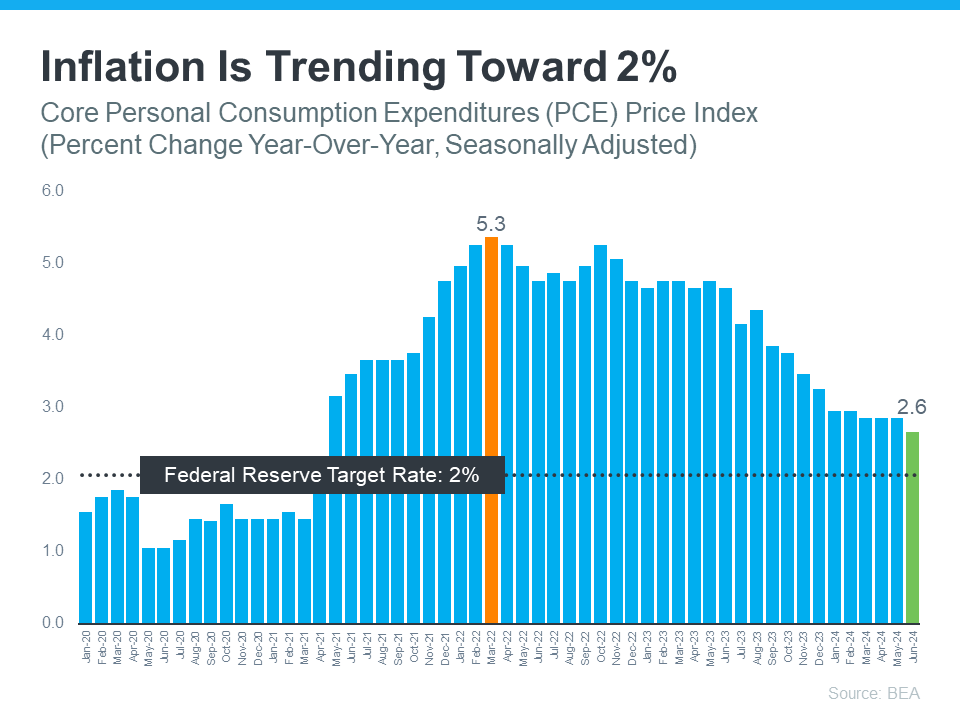How Our Economy Impacts Your Mortgage Interest Rate

As someone who’s thinking about buying or selling a home, you’re probably paying close attention to mortgage rates – and wondering what the heck is ahead!
First this is critical to understand. One thing that can affect mortgage rates is the Federal Funds Rate, which influences how much it costs banks to borrow money from each other. While the Federal Reserve (the Fed) doesn’t directly control mortgage rates, they do control the Federal Funds Rate.
The relationship between the two is why people have been watching closely to see when the Fed might lower the Federal Funds Rate. Whenever they do, that’ll put downward pressure on mortgage rates. The Fed will meet again after the Presidential Election, and three of the most important metrics they’ll look at as they make their decision are:
- The Rate of Inflation
- How Many Jobs the Economy Is Adding
- The Unemployment Rate
Here’s the latest data on all three.
1. The Rate of Inflation
You’ve probably heard a lot about inflation over the past year or two – and you’ve likely felt it whenever you’ve gone to buy just about anything. That’s because high inflation means prices have been going up quickly.
The Fed has stated its goal is to get the rate of inflation back down to 2%. Right now, it’s still higher than that, but moving in the inconsistently in the right direction due the lag effect (see graph below):

2. How Many Jobs the Economy Is Adding
The Fed is also watching how many new jobs are created each month. They want to see job growth slow down consistently before taking any action on the Federal Funds Rate. If fewer jobs are created, it means the economy is still strong but cooling a bit – which is their goal. That appears to be exactly what’s happening now. Inman news, a real estate resource says:
“. . . the Bureau of Labor Statistics reported that employers added fewer jobs in April and May than previously thought and that hiring by private companies was sluggish in June.”
So, while employers are still adding jobs, they’re not adding as many as before. Although the current October 2024 states more jobs than expected, the tendency to revise these numbers downward 30 days later, makes it difficult to project. The indicator the economy is slowing down after being overheated for quite some time. This is an encouraging trend for the Fed to see to lower the Fed Funds rate in the future, but less full time jobs is not a winner for most families.
3. The Unemployment Rate
The unemployment rate is the percentage of people who want to work but can’t find jobs. So, a low rate means a lot of Americans are employed. That’s a good thing for many people.
But it can also lead to higher inflation because more people working means more spending – which drives up prices. Right now, the unemployment rate is low, but it’s been rising slowly over the past few months (see graph below):
It may seem harsh, but a consistently rising unemployment rate is something the Fed needs to see before deciding to cut the Federal Funds Rate. That’s because a higher unemployment rate would mean reduced spending, and that would help get inflation back under control. In my opinion, if the FED only looks at consumer spending and not how government spending adds to inflation, all the dots are not be connected. If you are interested in learning more about the Federal Reserve, I suggest an insider’s view in this book, FED UP by Daniella Di Martino Booth.
What Does This Mean Moving Forward?
While mortgage rates are going to continue to be volatile in the days and months ahead, these are signs the economy is headed in the direction the Fed wants to see. But even with that, it’s unclear what the the Fed will do next when they meet again, Jerome Powell, Chair of the Federal Reserve, recently said:
“We want to be more confident that inflation is moving sustainably down toward 2% before we start the process of reducing or loosening policy.”
Basically, we’re seeing the first signs now, but they need more data and more time to feel confident that this is a consistent trend. Assuming that direction continues, according to the CME FedWatch Tool, experts say there’s a projected chance the Fed will lower the Federal Funds Rate at their next meeting.
Remember, the Fed doesn’t directly set mortgage rates. It’s just that whenever they decide to cut the Federal Funds Rate, mortgage rates should respond.
Of course, the timing of when the Fed takes action could change because of new economic reports, world events, and other factors. That’s why it’s usually not a good idea to try to time the market.
Bottom Line
Recent economic data may signal that hope is on the horizon for mortgage rates and your ability to either purchase or refinance your mortgage loan. Let’s connect so you have an expert to keep you up to date on the latest national housing trends and our local Santa Fe real estate market! Today we have more than 900 Santa Fe single family homes, condos and townhomes on the market and nearly 50% with price reductions. There is no obligation or fee or a confidential consultation. Just call or text to schedule one. Thank you for reading, Emily Medvec




